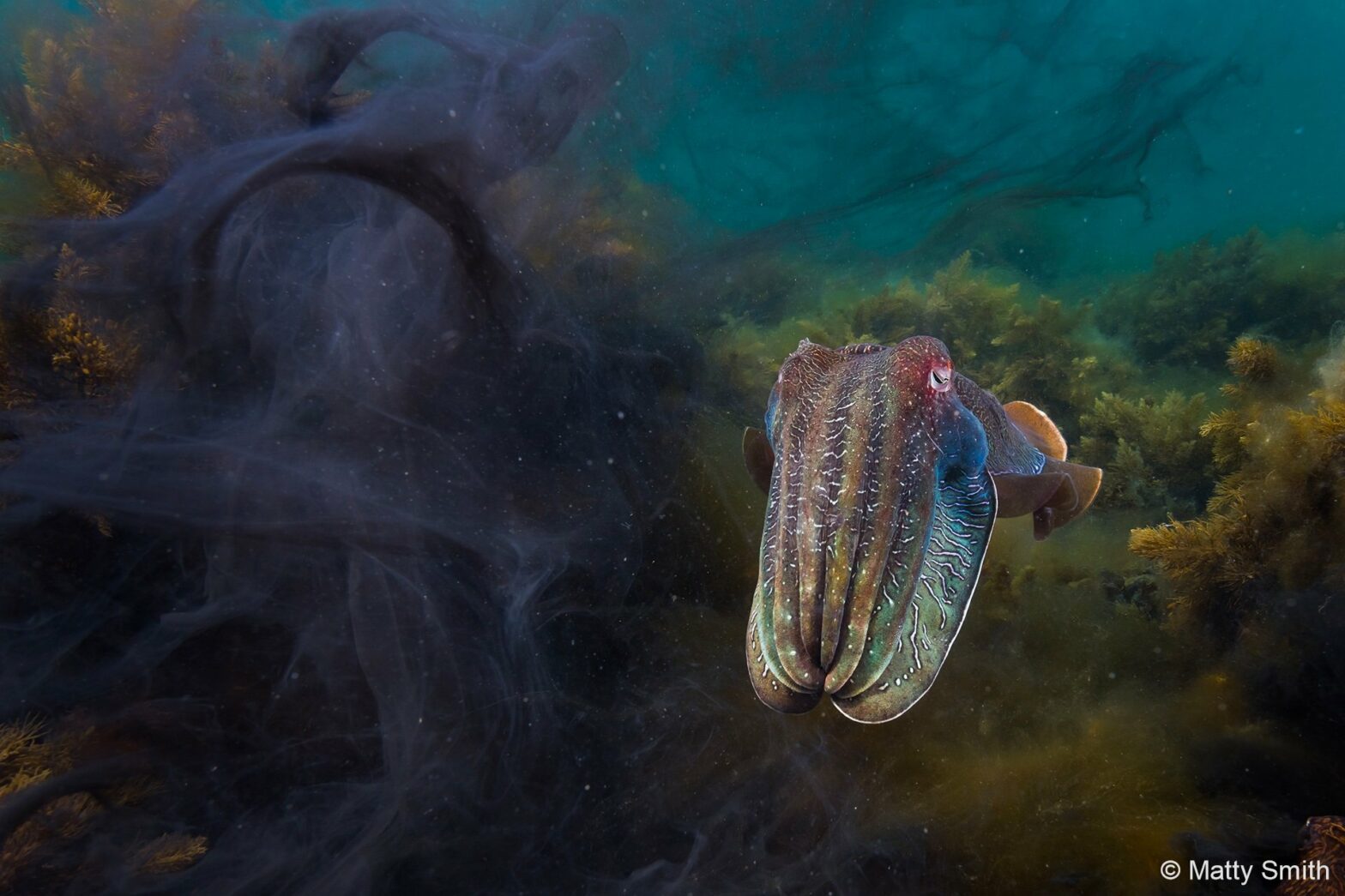[ad_1]
The beautiful observations of nature in our annual celebration of the ANZANG region’s best nature photographers remind us of the wonder of our wild spaces and species. This year marks 20 years of the AGNPOTY competition – and it offers us a chance to reflect on how nature photography has changed during that time.
The transition from analogue film – the preserve of an elite community of highly skilled practitioners – to digital processes brought photography to the masses. Capturing incredible nature photos has become accessible to anyone holding a smartphone. New techniques and constant innovations in technology have enabled us to see nature in new ways and with fresh perspectives, reflected in an ever-changing roster of award categories.
This year the winning portfolio by rising star Lewis Burnett, for example, was shot completely via drone. We also saw how photographers have shifted focus to different subject matter during the past two decades as animal behaviours and ecosystems have changed; some species have come under threat and become hard to find, or even extinct, while other animals have shown resilience or adapted to human interventions.
The giant cuttlefish, featuring so majestically both in Daniel Sly’s shortlisted image, and in Matty Smith’s winning image, have become increasingly popular subjects in recent years. A commercial fishing ban in 2013 in the Spencer Gulf led to a rapid growth in numbers aggregating in Whyalla Bay, restoring a marine spectacle that draws repeat visits by the best wildlife photographers from around the world.
The competition has become a record of our changing world, an earth in perpetual transformation, and this year we recognise that photography is more important than ever in showing us what is at risk of being lost. With the fragility of our natural world in focus, it is the overall winner by Samuel Markham, selected by three veteran judges of the nature photography world, that speaks most urgently to the state in which we find ourselves this coming summer under a destabilised climate with an El Niño weather system on the way.
-Australian Geographic Picture Editor Nicky Catley
‘My Country Burns’ – Samuel Markham
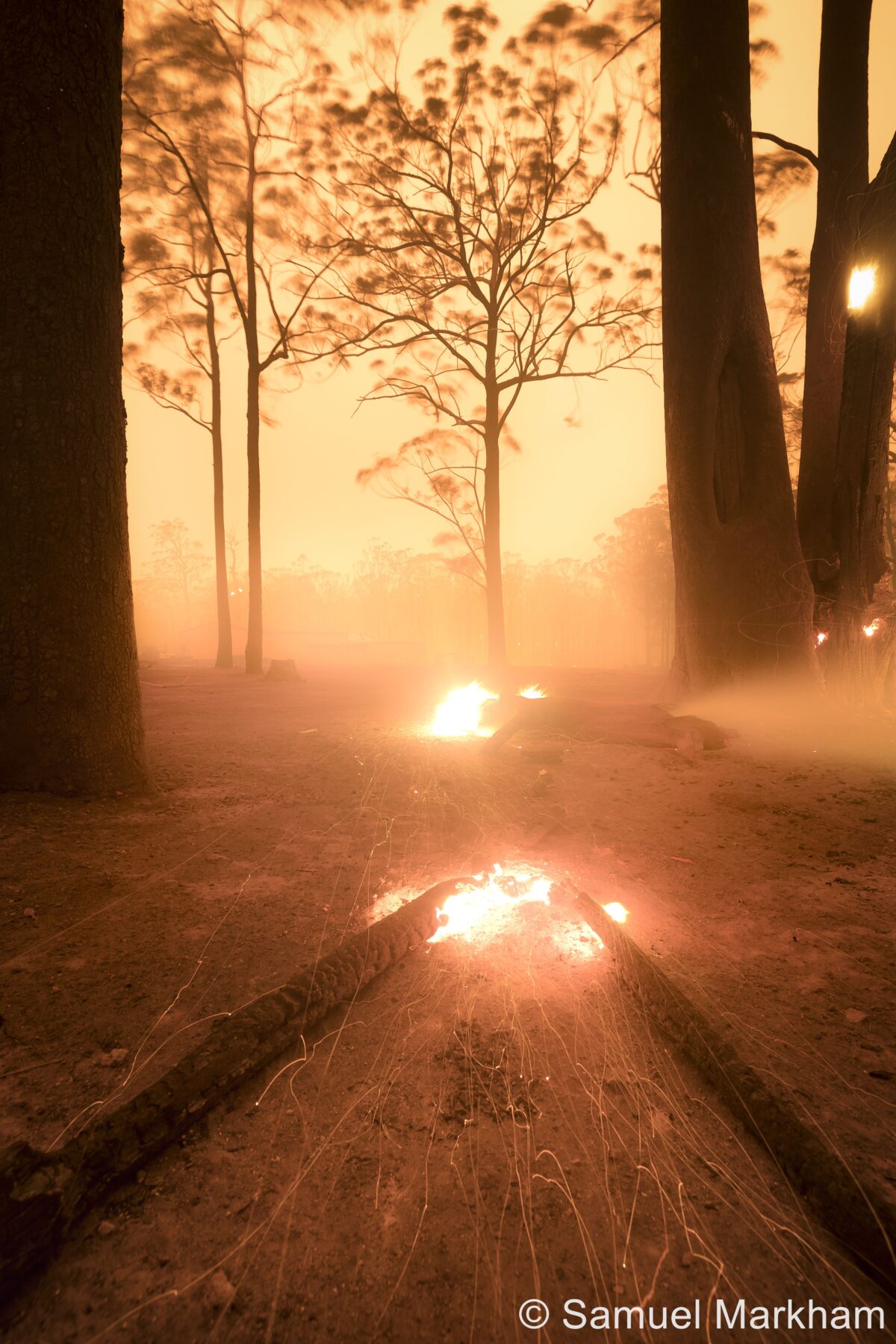
Parma Creek Nature Reserve, New South Wales
Nothing can prepare someone for being straight in the line of a pyrocumulonimbus firestorm with a built-in flashover and temperatures exceeding 1000°C. While protecting my home on New Year’s Eve 2019, daylight turned into darkness with 40m-plus flames. Image taken 20 minutes after the fire front had passed.
Canon EOS 5D Mk IV, Canon EF 16–35mm f/4L IS USM, 25, f/9, ISO 640, Sirui R-2214X tripod, Sirui K-30x ballhead
Judges’ comments: This is a breathtaking, scary photograph, full of energy and visual drama, which is indicative of the world we now live in. Despite the circumstances, this isn’t a panicked shot; it is a studied composition with extraordinary detail. Many layers draw us into the scene, giving us a genuine feeling of being part of the firestorm.
‘Aftermath’ – Matty Smith
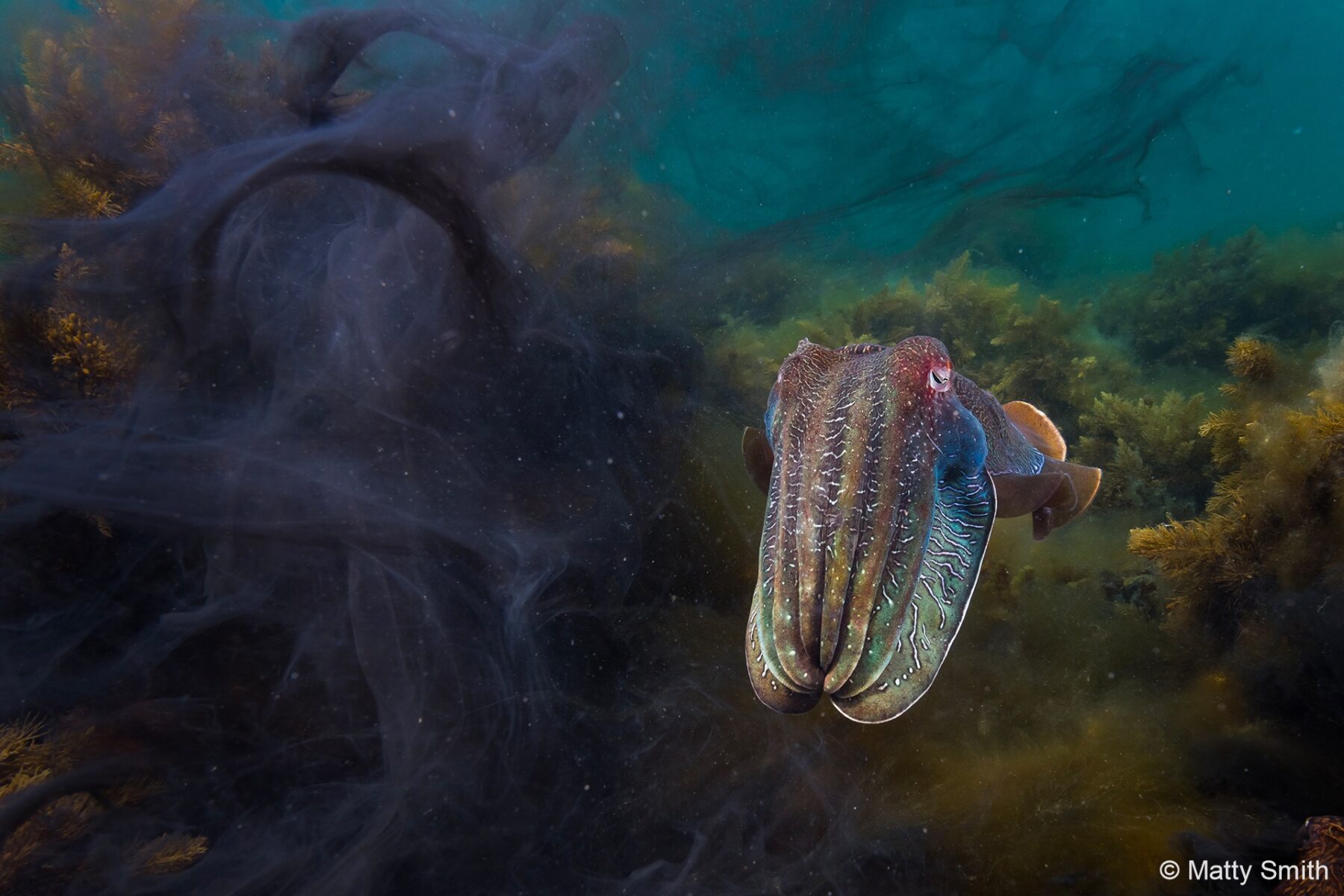
Giant cuttlefish (Sepia apama) / Whyalla, South Australia
Moments before this frame, three male giant cuttlefish were trying to court a female. A fight ensued between two males and they inked the water as they grappled and rolled out of frame. The female bolted, and this male was left in the aftermath, still displaying his vivid courting colours.
Nikon D810, NIKKOR 16–35mm f/4 VRII lens, 1/40, f/16, ISO 320, 2 x Inon Z240 flashes, Aquatica AD810 underwater housing, Aquatica 9.25″ glass dome port
Judges’ comments: A galaxy of ink is the key to this ethereal underwater capture, the fantastic result of time, place and circumstance. The photographer has shown great technical and emotional control to capture this unrepeatable moment. A beautiful piece of storytelling.
‘Frog in a Bog’ – Tom Owen Edmunds
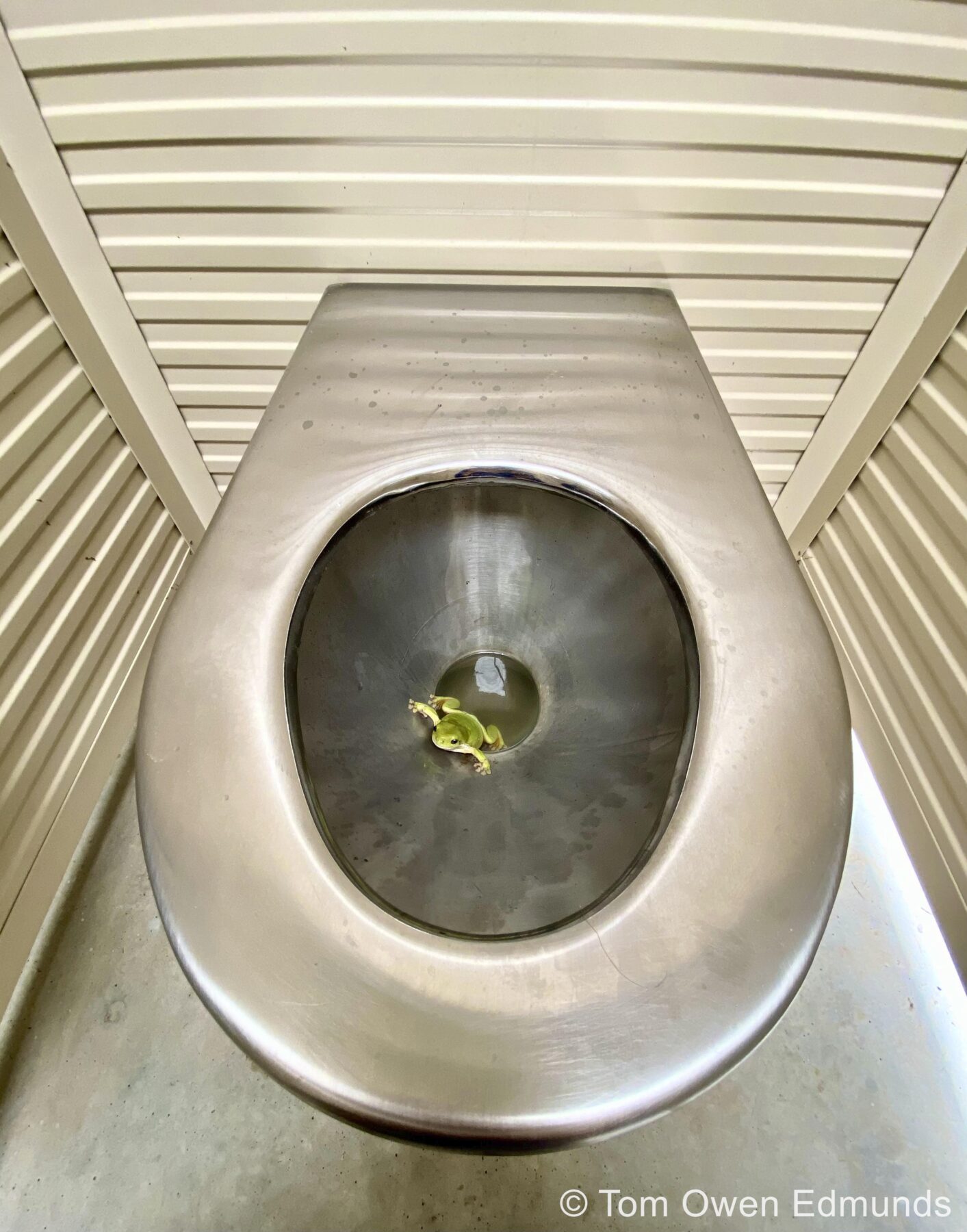
Green tree frog (Litoria caerulea) / Walgett, New South Wales
One of the joys of Australia is that nature is everywhere. I love rural Australia – and the ever present dunny frogs – and liked the space-age look of this dunny juxtaposed with the ancient frog. My brother-in-law tells me a frog in the dunny means the water is clean… better that than a snake!
Apple iPhone 11 Pro Max, 1.5mm, 1/80, f/2.4, ISO 250, handheld
Judges’ comments: A humorous image to eloquently tell the story of an animal living well in its adopted environment. Good choice of technique and superb graphic qualities bring the elements together.
‘Nectar of Life’ – Dan Jones
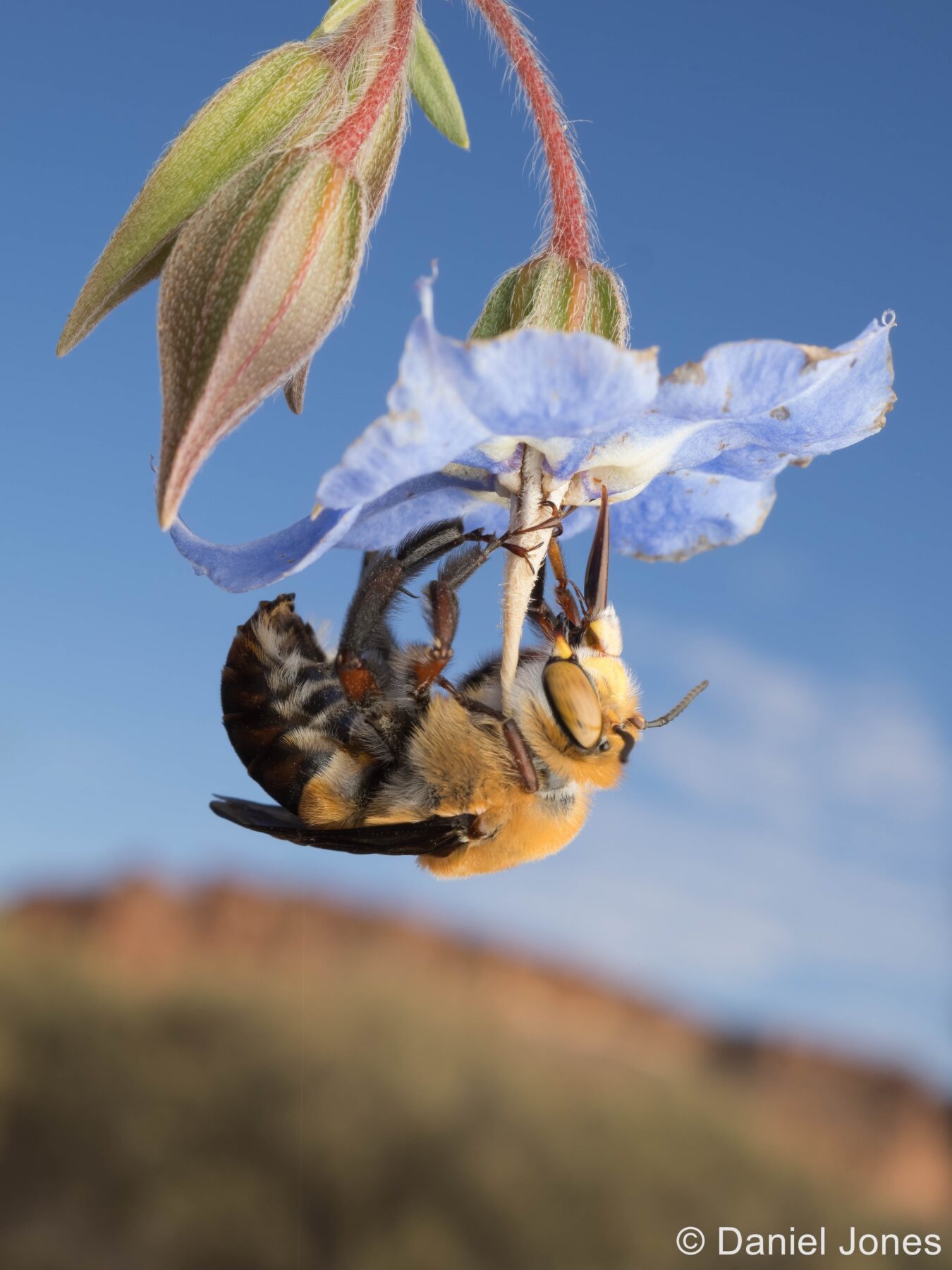
Dawson’s burrowing bee (Amegilla dawsoni) / Kennedy Range, Western Australia
Against the backdrop of the Kennedy Range, Western Australia, a Dawson’s burrowing bee sips nectar from the flower of a native bluebell. Water is scarce in this arid region, and for these bees, nectar may be the only source of the precious resource.
OM System OM-1, Olympus 30mm macro, 1/250, f/11, ISO 250, Godox TT350 flash, Cygnustech diffuser, handheld
Judges’ comments: The photographer has given a great sense of place with the inclusion of environment behind the enormous bee. The image has extraordinary detail, beautiful lighting and great use of colour saturation.
‘Intricate’ – Tania Malkin
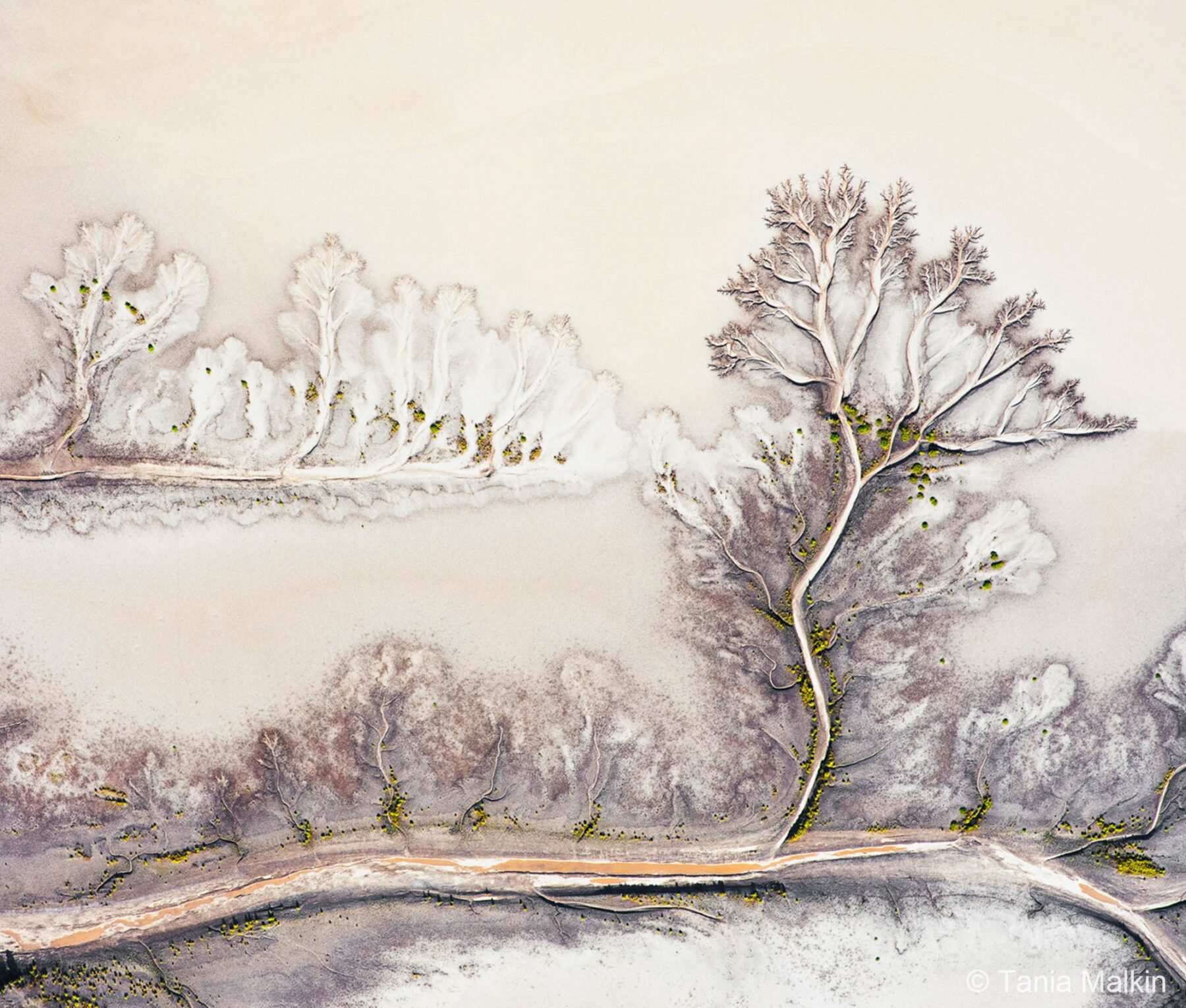
Joseph Bonaparte Gulf flood plains, Northern Territory
Intricate is an image of a delta on the flood plains of the Joseph Bonaparte Gulf rivers and their creeks. A landscape within a landscape, the water flow illustrates a tree, clouds and soil. The alluvial fans show the history of the waters’ flow and illustrate how they bring life to the region in the wet season.
Nikon D810, Zeiss Planar 85mm, 1/800, f/8, ISO 500, handheld, taken from a helicopter at approximately 2000ft (610m)
Judges’ comments: An intriguing image that challenges perception. What could be minute detail is a significant slice of landscape. The subtle colour palate is punctuated with green growth that draws the eye in and helps to interpret the scene.
‘Golden Seahorse’ – Peter McGee
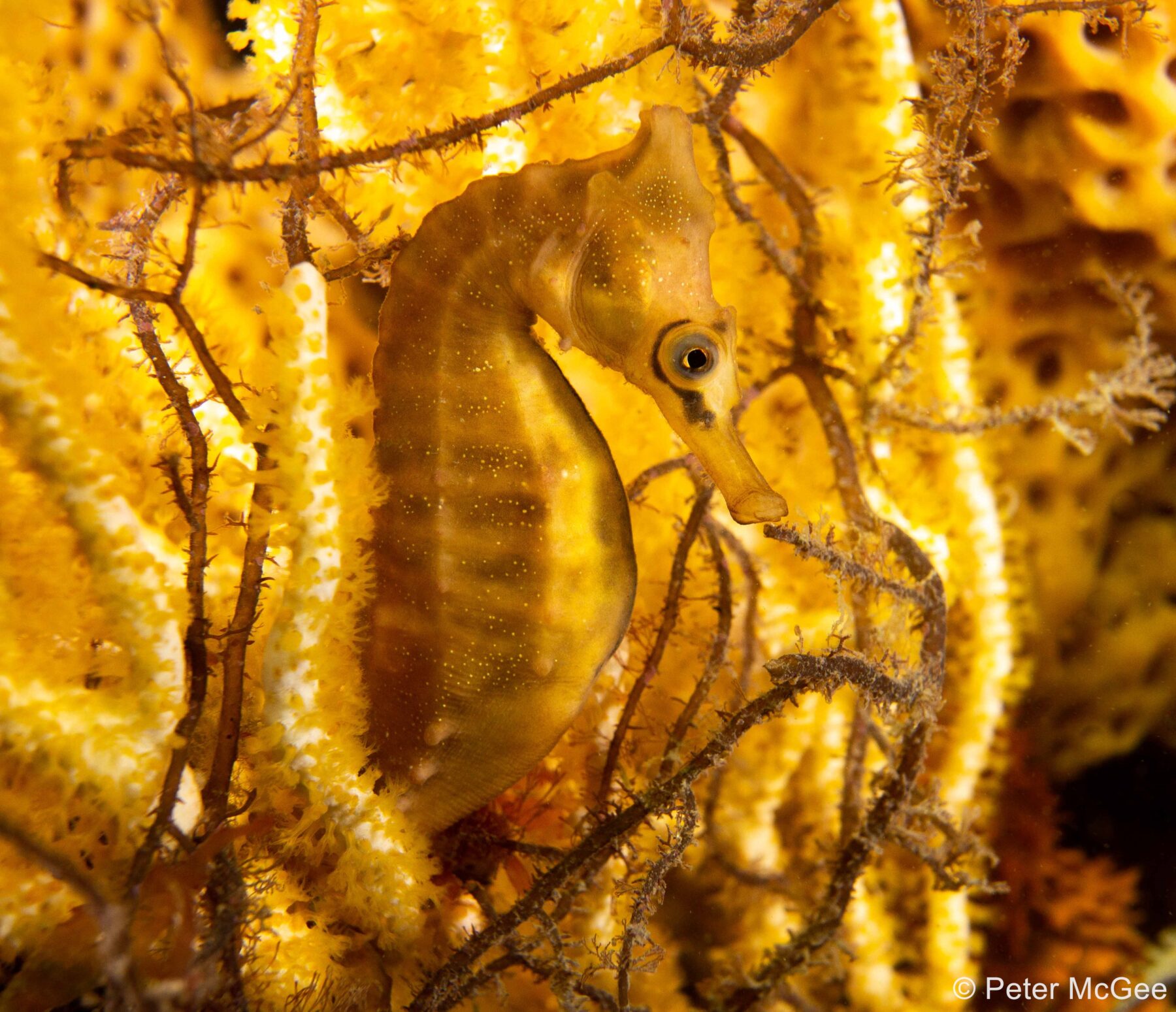
White’s seahorse (Hippocampus whitei) / Nelson Bay, New South Wales
White’s seahorse is endemic to the east coast of Australia. The species is classed as endangered, with large population declines over recent decades due mainly to habitat loss. They have the ability to change colour and blend with habitat, including the beautiful yellow soft coral in this image.
Sony NEX7, Sony 30mm macro, 1/160, f/16, ISO 200, Inon strobes, handheld
Judges’ comments: A beautiful photograph of an endangered species in its environment. Framed by coral, with perfect lighting and exposure, this seahorse looks ready to take to the stage.
‘Desert Tower’ – Luke Tscharke
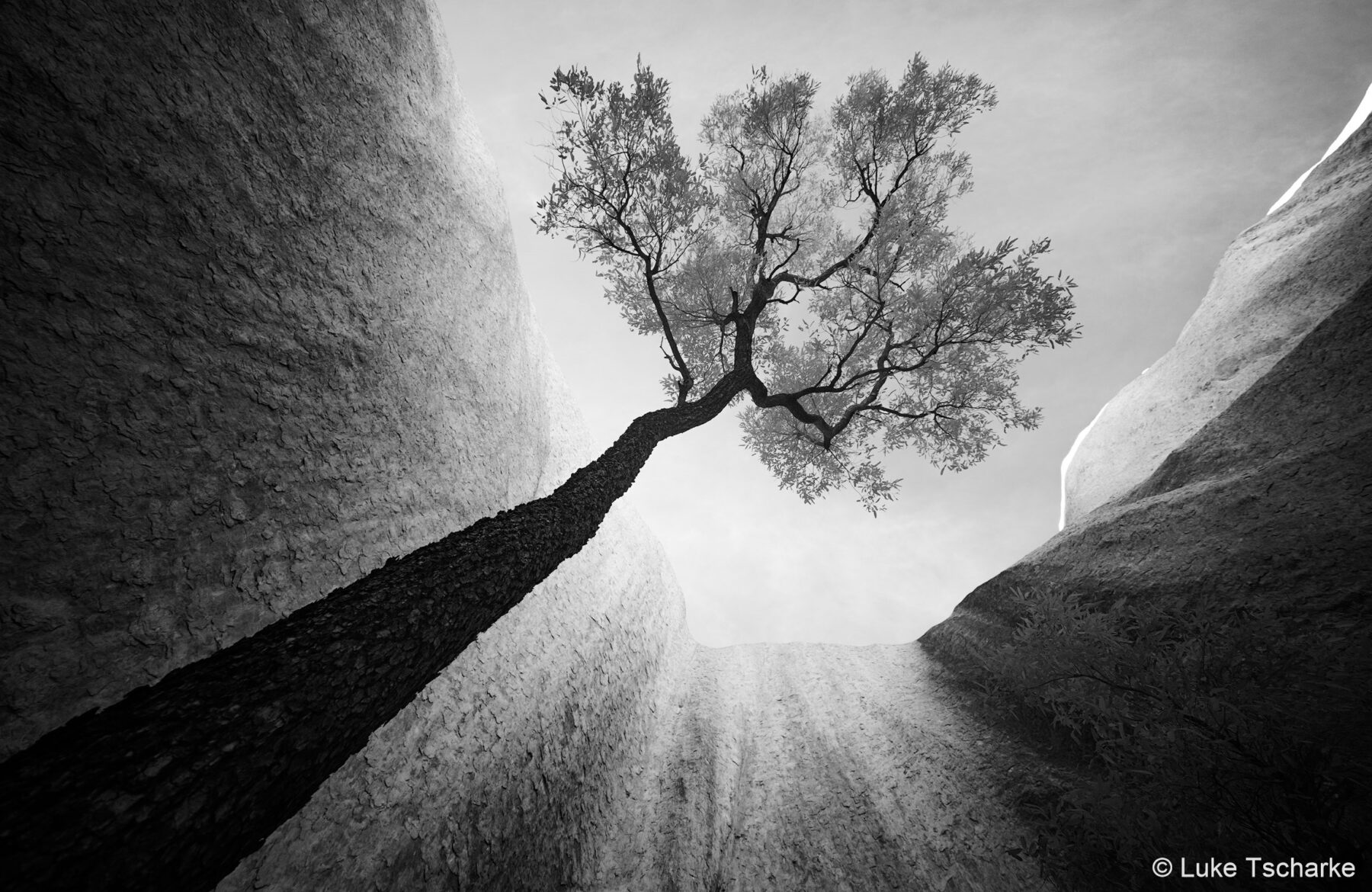
Uluru-Kata Tjuta National Park, Northern Territory
A desert oak (Allocasuarina decaisneana or kurkara) stretches skyward beneath the towering monolith of Uluru. A low perspective situates the tree within the scene’s natural curves. Captured in infrared to contrast the dark tree bark with the foliage and rock wall.
Sony A7R (infrared converted), 16–35mm (16mm), 1/60, f/4, ISO 100, handheld
Judges’ comments: A fantastic, dynamic shot with the tree’s leading line taking us to the heart of the image. The use of infrared here is spot-on, allowing exploration of the extent of monochrome’s blacks and whites.
‘Mungo’ – Jason Perry
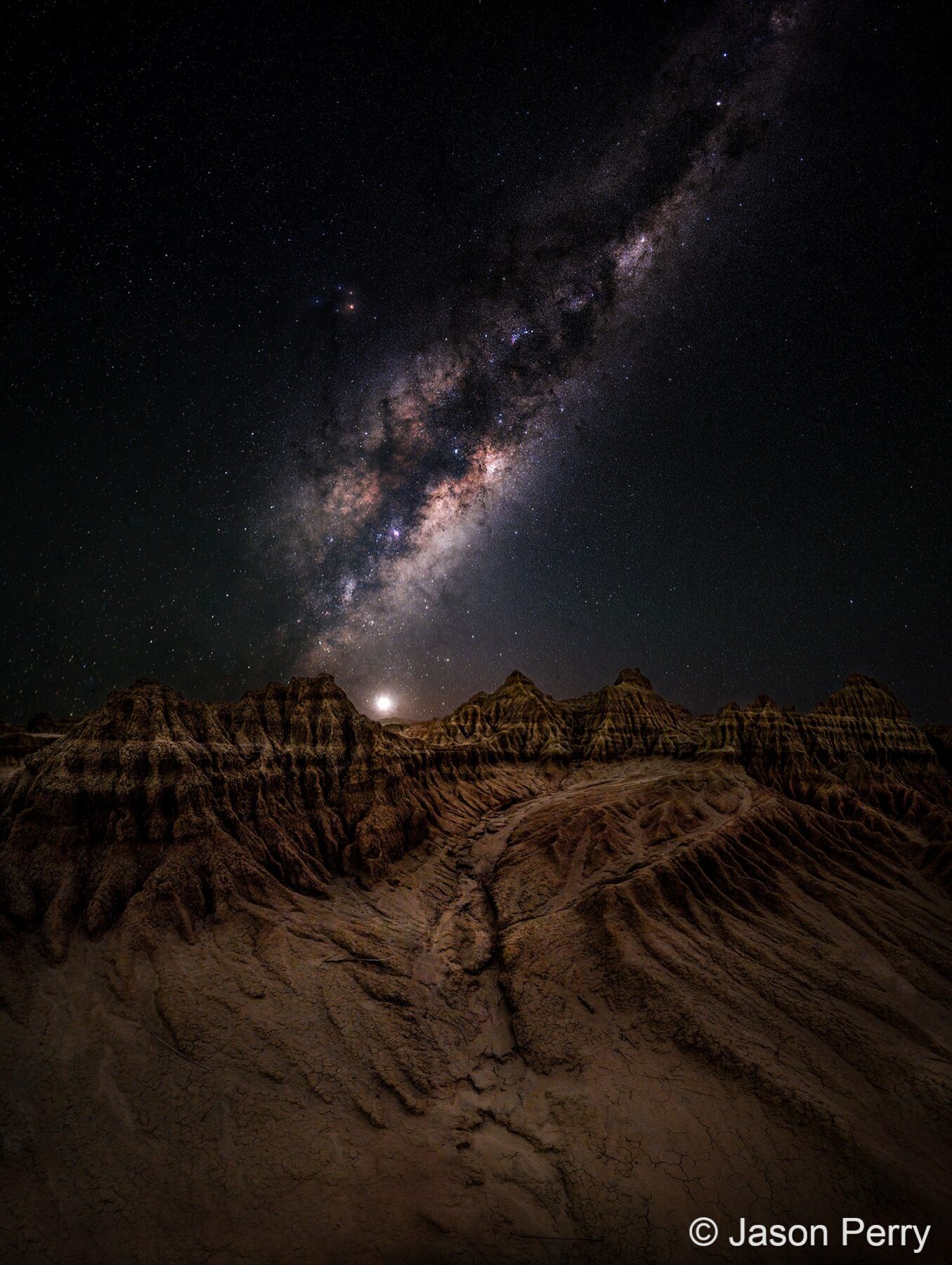
Mungo National Park, New South Wales
Mungo is dominated by ancient lake beds that dried up close to 18,000 years ago. Wind and water have since created the crescent-shaped landforms called lunettes that you see in this image. The lunette is incredibly beautiful in daylight, but there is something special about seeing it under the light of the cosmos that made capturing this moment even more special.
Nikon Z7II, NIKKOR 14-24mm f/2.8G lens with FTZ Adapter, 20 (sky) 180 (foreground), f/2.8 (sky) f/3.2 (foreground), ISO 6400 (sky) 1250 (foreground), multi-image panorama
Judges’ comments: This is a spiritual, otherworldly photograph. A beautiful composition using the shapes of the land to draw us deep into the sky, with the moon catching the eye and drawing us deeper into the image.
‘Hidden Courage’ – Isabella Alexis
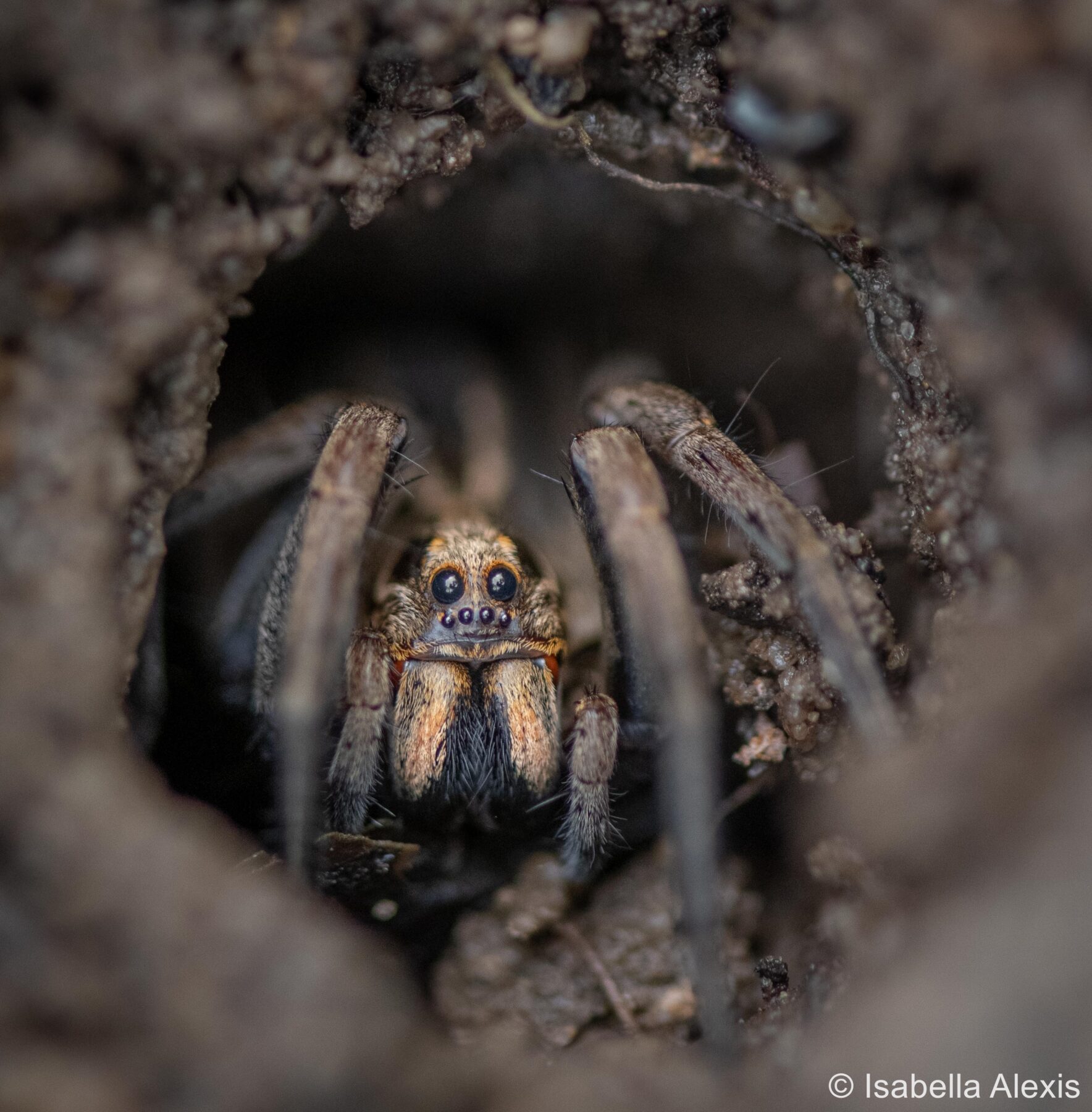
Wolf spider (family Lycosidae) / Sunshine Coast, Queensland
Although it’s a petrifying first sight, ask yourself who is more scared right now? Since this is only a photograph, a paused juncture in time, you missed a vital moment. You missed the glimpse of her spiderlings hidden behind her, the moment she became a courageous mother in my eyes.
Nikon Z7, AF-S VR Micro NIKKOR 105mm F/2.8G IF ED, 1/250, f/5.6, ISO 1000, handheld
Judges’ comments: A narrow depth of focus, square crop and using the environment to frame the spider within the frame have all been good, deliberate choices made by this photographer. Out of focus extremities force our eye onto the subject, drawing us into its world.
‘Swamped Skies’ – Joshua Rozells
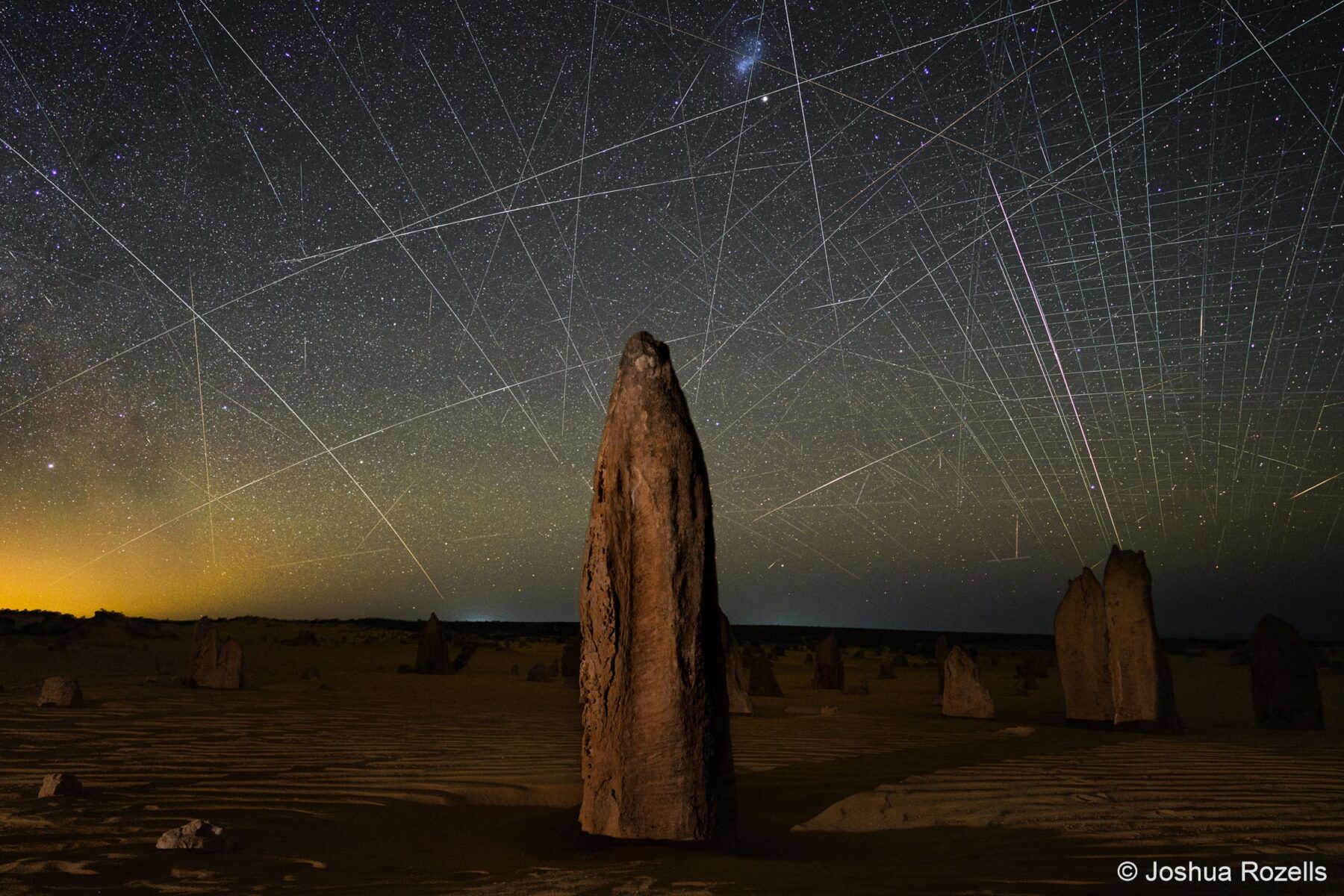
Pinnacles Desert, Nambung National Park, Western Australia
The light pollution caused by satellites is becoming a growing problem for astronomers, as thousands are launched every year. Satellites are becoming cheaper and easier to launch, with satellite light pollution remaining unregulated. This photo shows their impact, with 85 minutes of satellite trails blended into one photo.
Sony A7R IV, Sony 24mm F/1.4, 15, f/1.4, ISO 3200, tripod, multi layer stack
Judges’ comments: A fascinating take on human impact, demonstrating that it extends far beyond water and Country and into the sky. The distant glow of civilisation reminds us that even in the desert we’re not alone. It’s admirable that the photographer has used this medium to document an impact not readily seen with the naked eye.
‘Aerial Oceans’ – Lewis Burnett
1 – Saltwater crocodile (Crocodylus porosus)
Willie Creek, Dampier Peninsula, Western Australia
I spent five months searching for crocodiles in blue water with conditions favourable for drone photography. I was beyond happy to photograph this Willie Creek resident early one morning on the Dampier Peninsula.
DJI Mavic 2 Pro, 1/400, f/5, ISO 400
2 – Green sea turtle (Chelonia mydas)
Ardyaloon (One Arm Point), Dampier Peninsula, Western Australia
Watching the enormous tides fill and drain the coastal mangroves of the Dampier Peninsula each day was a highlight of our time spent up there. The amount of life that the tides would bring into the lagoons with each flush truly blew my mind.
DJI Mavic 2 Pro, 1/240, f/2.8, ISO 400
3 – Risso’s dolphins (Grampus griseus)
Manatuto, Timor-Leste
This was my first time observing Risso’s dolphins from both above and below the waterline. It took an enormous amount of time and patience to be able to get close enough to these secretive cetaceans and photograph them. But once they had accepted us into their presence, they relaxed, and even slept near us.
DJI Mini 3 Pro, 1/800, f/1.7, ISO 200
4 – Great hammerhead shark (Sphyrna mokarran)
Coral Bay, Ningaloo Reef, Western Australia
A lone great hammerhead shark searches the sandy inner lagoon of Ningaloo Reef for potential prey. Drawn in by the smell of decomposing fish from a recent coral spawning event that didn’t go to plan, the sharks were left to clean up.
DJI Mavic 2 Pro, 1/500, f/2.8, ISO 400
5 – Pygmy blue whale (Balaenoptera musculus brevicauda)
Baucau, Timor-Leste
No image will ever do justice to the sheer size and presence that a blue whale holds in the water. These gigantic cetaceans migrate thousands of kilometres each year from the Banda Sea to birth and feed all the way down to the Southern Ocean. I will never forget them surfacing near our boat.
DJI Mini 3 Pro, 1/400, f/1.7, ISO 400
6 – Reef manta ray (Mobula alfredi)
Coral Bay, Ningaloo Reef, Western Australia
Watching these stunning manta rays linefeed on the plankton-rich waters of Coral Bay is a sight I won’t forget in a hurry. From the surface you can see their wing tips breaking through, but from above you can really see just how enormous these giant rays truly are.
DJI Mavic 2 Pro, 1/320, f/5, ISO 400
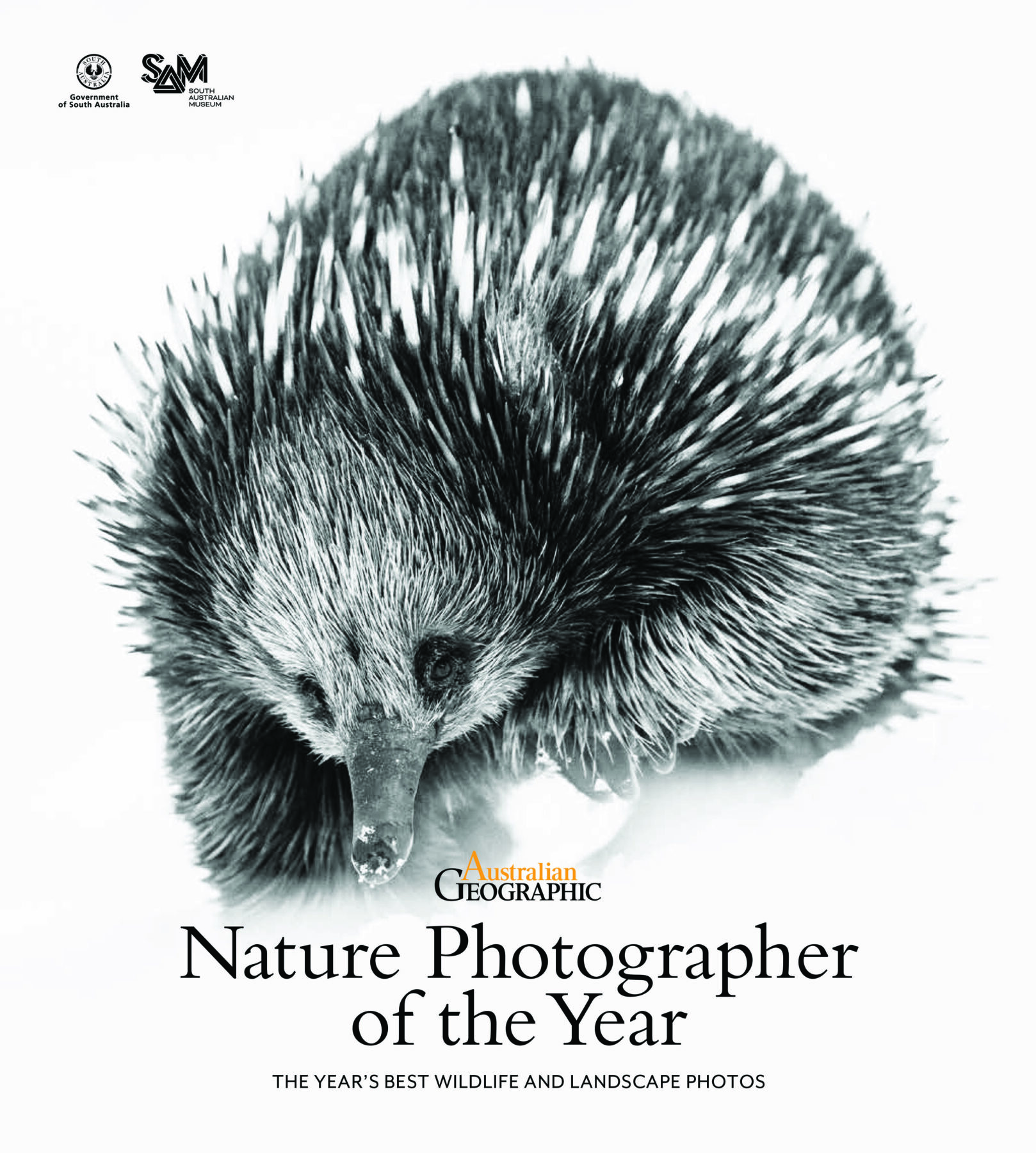
Exhibition and book
The AGNPOTY exhibition can be seen at the South Australian Museum in Adelaide. The exhibition opens 26 August and runs until 29 October. It can also be seen at the Australian Museum in Sydney, dates to be advised.
Get your copy of the AGNPOTY catalogue book from the museums’ gift shops, QBD Bookshops, all good bookstores, or our online store.
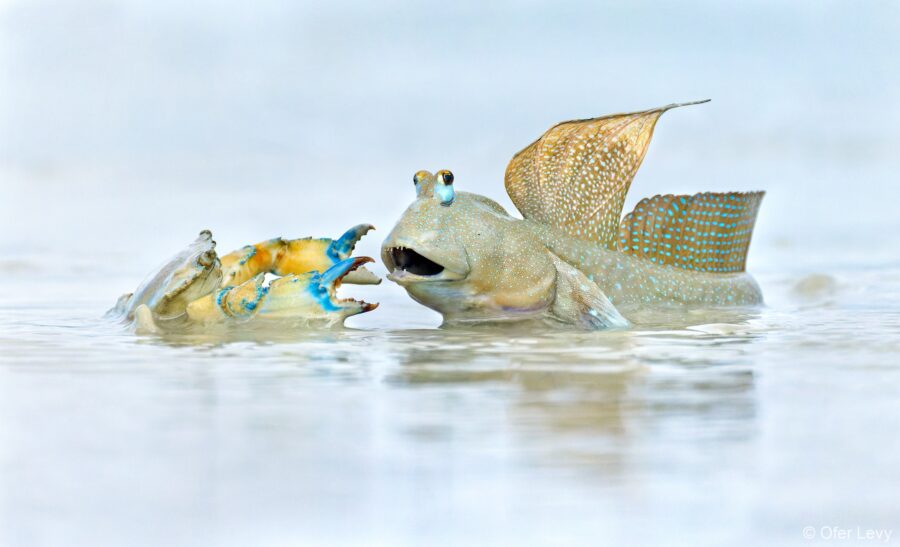 Related: Shortlist: 2023 Australian Geographic Nature Photographer of the Year
Related: Shortlist: 2023 Australian Geographic Nature Photographer of the Year
[ad_2]
